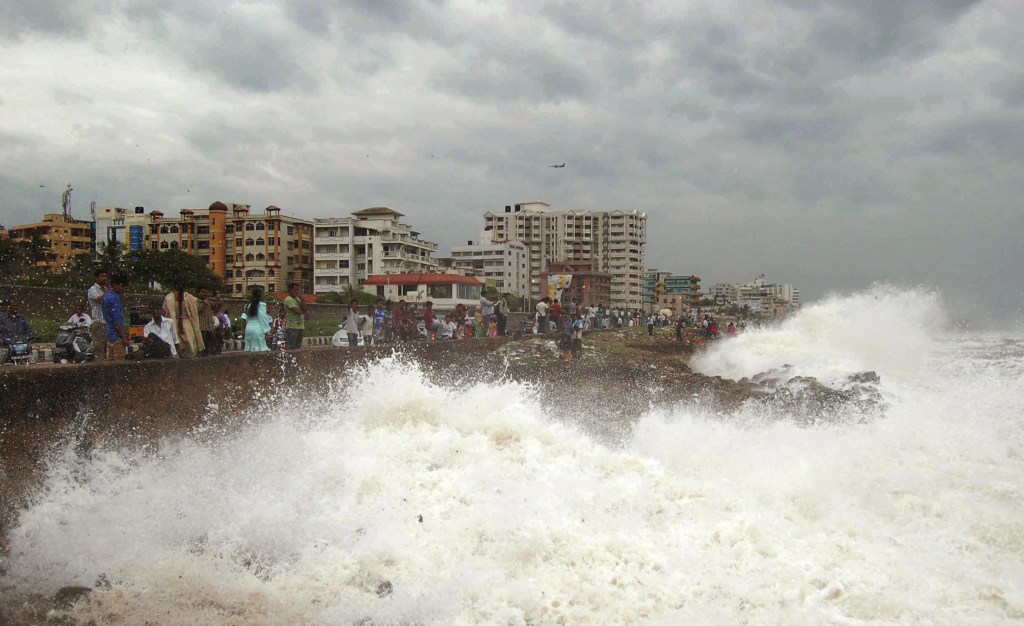BEHRAMPUR, India — A massive, powerful cyclone packing heavy rains and destructive winds slammed into India’s eastern coastline Saturday evening, as hundreds of thousands of residents moved inland to shelters in hopes of riding out the dangerous storm.
Roads were all but empty as high waves lashed the coastline of Orissa state, which will bear the brunt of Cyclone Phailin. By midafternoon, wind gusts were so strong that they could blow over grown men. Seawater pushed inland, swamping villages where many people survive as subsistence farmers in mud and thatch huts.
As the cyclone swept across the Bay of Bengal toward the Indian coast, satellite images showed its spinning tails covering an area larger than France. Images appeared to show the storm making landfall early Saturday night near Gopalpur.
With some of the world’s warmest waters, the Indian Ocean has long been considered a cyclone hot spot.
Some of the deadliest storms in recent history have come through the Bay of Bengal, including a 1999 cyclone that also hit Orissa and killed 10,000 people.
Officials said early reports of deaths from Phailin won’t become clear until after daybreak Sunday.
Estimates of the storm’s power had dropped slightly, with the U.S. Navy’s Joint Typhoon Warning Center in Hawaii showing maximum sustained winds of about 138 mph, with gusts up to 167 mph.
The storm, though, remained exceedingly strong and dangerous. A few hours before it hit land, the eye of the storm collapsed, spreading the hurricane force winds out over a larger area and giving it a “bigger damage footprint,” said Jeff Masters, meteorology director at the U.S.-based private Weather Underground.
Send questions/comments to the editors.



Success. Please wait for the page to reload. If the page does not reload within 5 seconds, please refresh the page.
Enter your email and password to access comments.
Hi, to comment on stories you must . This profile is in addition to your subscription and website login.
Already have a commenting profile? .
Invalid username/password.
Please check your email to confirm and complete your registration.
Only subscribers are eligible to post comments. Please subscribe or login first for digital access. Here’s why.
Use the form below to reset your password. When you've submitted your account email, we will send an email with a reset code.